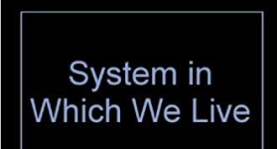
Arthur Oram (1916-2005), a leading member of the Society for Psychical Research, published experiments in telepathy and actively explored mediumship. His book The System in Which We Live (1998) seeks to reconcile paranormal phenomena with scientific methodology.
Life and Career
Arthur Talbot Oram was born on 27 June 1916 in Devizes, Wiltshire. He joined the RAF, then in 1942 left to work on financial investigations in industry for the Ministry of Aircraft Production, which involved extensive travel. His professional skills were notable in the field of accountancy and statistics. He was a management consultant for Unilever for many years and a member of the Royal Institution.
Psychical Research
Oram joined the Society for Psychical Research in 1946 and was co-opted to its governing council in 1953, where he served for ten years before resigning to focus on his management consultancy. He later returned, becoming honorary secretary in 1984 and then a vice-president.
He was a member of the Astrological Society and spent time collecting astrological data (unpublished).
ESP
Oram was intrigued by accounts of card-guessing experiments in JB Rhine’s Extra-Sensory Perception (1934). He decided to try doing such experiments himself in his hotel room during long periods of travel in connection with his work. He carried out personal but formal testing and discovered significantly high scores in his guesses (p = 0.00006). He wrote-up his experiments in a paper and sent it to the magazine Nature which, to his surprise, published it.1
Mediumship and Survival
Oram devoted considerable energy into the investigation of mediums. His wife had mediumistic abilities, and he believed she made contact with him after her death.2
In his 1998 book The System in Which We Live, Oram discusses his belief in the existence of the mind as a separate entity and rejection of ‘materialistic interpretations of the mind-body relationship [and] Cartesian dualism’.3 He discusses alleged communications from the dead, approving claims by Konstantin Raudive to have discovered a new channel of communication in so-called ‘electronic voice phenomena’ (EVP) and also defends Helen Duncan’s mediumship. He argues that, ‘Once we can all agree on the importance of the world of mind and its position in a set of dimensions utterly different from those of physics, we shall be on the most vital road to a fundamental understanding of our subject.’4
Works
Books
The System in Which We Live (1998). Purley: Talbot Books.
Articles
Nature of time (1946). Nature 157, 556.
Review of Studies in Extrasensory Perception, by S.D. Kahn in Proceedings of the American Society for Psychical Research 25 (1953). Journal of the Society for Psychical Research 37, 105-7.
An experiment with random numbers (1954). Journal of the Society for Psychical Research 37, 369-77.
Hierarchical psi (1976). Journal of the Society for Psychical Research 48, 301-5.
Two tests of survival after death: Report on negative results (with I. Stevenson & B. Markwick, 1989). Journal of the Society for Psychical Research 55, 329-36.
The original Thouless two-word code (1996). Journal of the Society for Psychical Research 61, 116-19.
Book Reviews
Harmonics in Astrology, by J.M. Addey (1977). Journal of the Society for Psychical Research 49, 617-19.
The Spheres of Destiny, by M. Gauquelin (1980). Journal of the Society for Psychical Research 50, 481-82.
Melvyn Willin
Literature
Carr, B. (2005). Obituary: Arthur Talbot Oram. Journal of the Society for Psychical Research 69/4, 235-37.
Randall, J. (1999). Review of The System in Which we Live, by A. Oram. Journal of the Society for Psychical Research 63, 316.
Oram, A. (2002). SPR members’ Jubilee memories, ,ed. by G.L. Playfair. Paranormal Review 24, 4.

